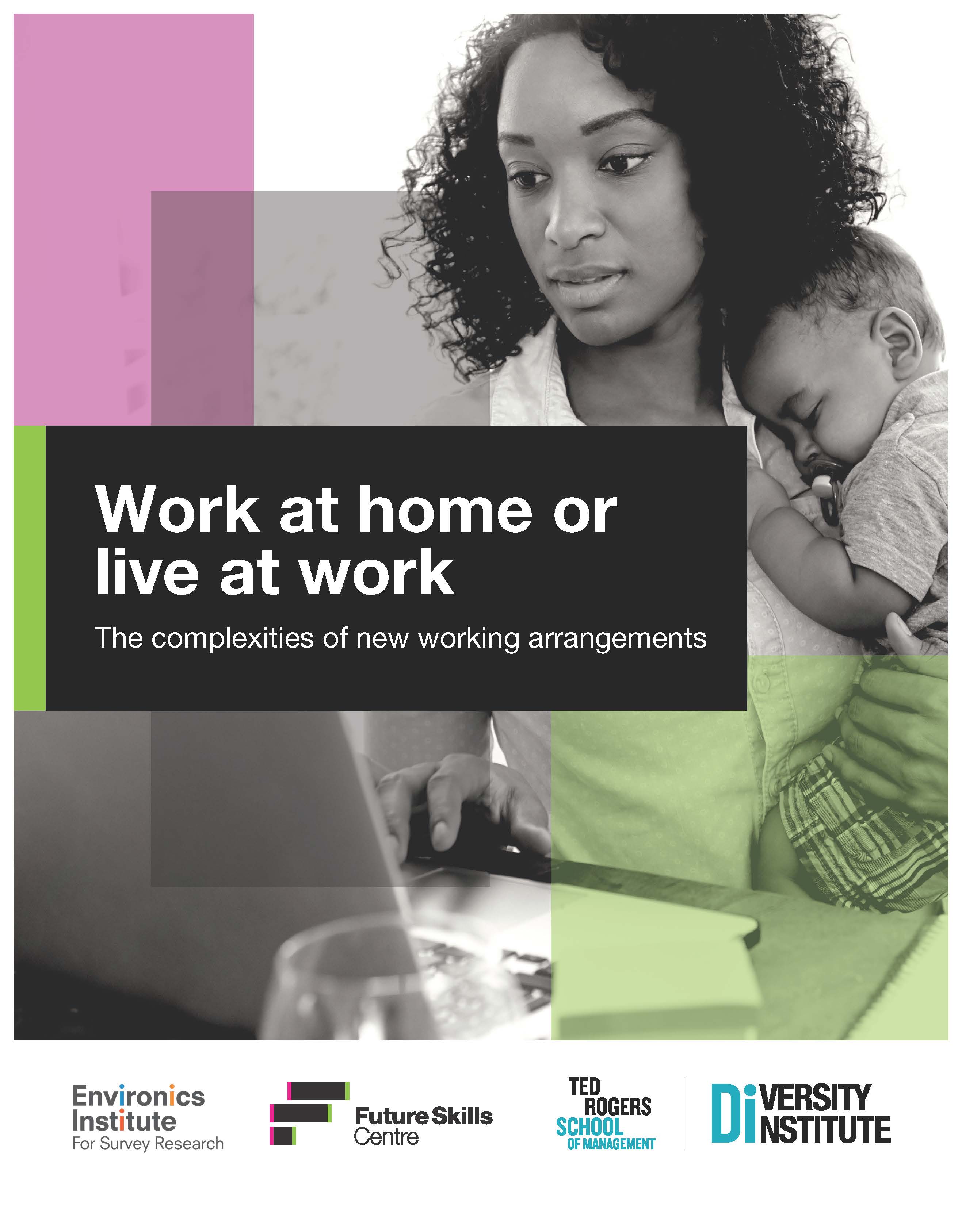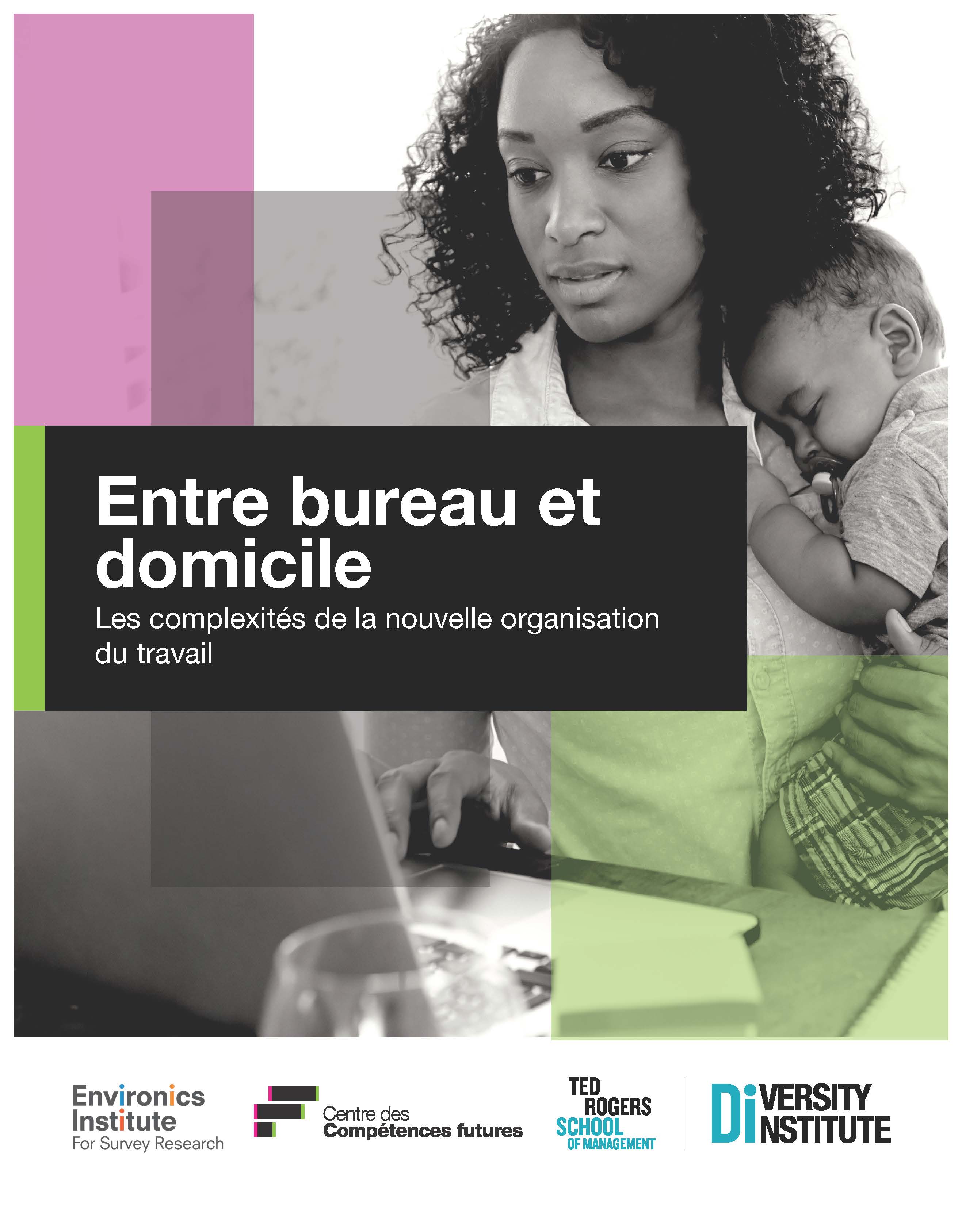Work at home or live at work
The complexities of new working arrangements
Canada | 2021
The Survey on Employment and Skills, conducted by the Environics Institute (external link) , seeks to gain better insight into how Canadians of all backgrounds have been affected by, and are coping with, the disruptions caused by the pandemic.
The results of this wave of the survey is presented in a series of reports, beginning with this one, Work at home or live at work: The complexities of new working arrangements, which focuses on the experience of working from home. This report examine who has been able to work from home during the pandemic, and workers who has have had to continue to work at their regular workplace.
It explores both the positive and negative experiences with working from home, and how these vary among different types of employees. The report’s findings provide an important reminder that the ability to stay home during the pandemic is closely tied to one’s socio-economic situation. They also suggest that the eventual reopening of the economy once the spread of the virus has been contained is unlikely to mean that everything will go back to the way it once was. Employees, particularly those with children at home, may continue to express a desire for working arrangements that are more flexible and family-friendly than those that they experienced before the pandemic took hold.
Entre bureau et domicile
Les complexités de la nouvelle organisation du travail
Le Sondage sur l'emploi et les compétences a cherché à mieux comprendre comment les Canadiens et les Canadiennes de tous les milieux ont été touchés par les perturbations causées par la pandémie et comment ils y font face.
Les résultats de cette phase de l'enquête seront présentés dans une série de rapports, en commençant par celui-ci, qui porte sur l'expérience du travail à domicile. Ce rapport examinera les personnes qui ont pu travailler à domicile pendant la pandémie et celles qui ont dû continuer à travailler sur leur lieu de travail habituel. Il explorera également les expériences positives et négatives du travail à domicile, et comment elles varient selon les différents types d'employés.
Les conclusions du rapport constituent un rappel important que la capacité de rester à la maison pendant la pandémie est étroitement liée à la situation socio-économique de la personne. Ils suggèrent également que la réouverture éventuelle de l'économie après l'endiguement de la propagation du virus ne signifie probablement pas que la vie redeviendra complètement comme avant. Les employés, notamment ceux qui ont des enfants à la maison, peuvent continuer à exprimer le désir d'obtenir des modalités de travail plus souples et plus adaptées à la vie de famille que celles qu'ils connaissaient avant la pandémie.
Published:
April 2021

